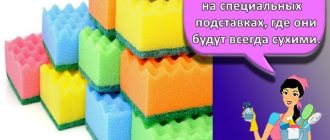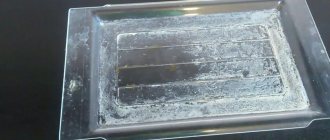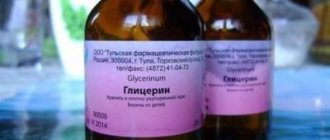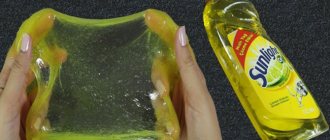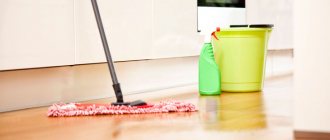Miscellaneous
Plastic doors are becoming in demand. They have many advantages when compared with other materials. First of all, it is affordable. At the same time, the quality remains at a high level. They are environmentally friendly, easy to care for, and have an attractive appearance.
Despite all the positive characteristics, the question arises of how to properly wash PVC doors. Interior doors need proper care, like any other piece of furniture. More often, traces of dirty hands, as well as dust, appear on the canvases. In this case, the door surface itself and the fittings become dirty.
Attention! Experts advise monitoring the appearance of the door during operation. This will eliminate the need to scrub dirty prints or spend a significant amount of time cleaning. In this case, no devices are needed. You can get by with soap and water.
Washing plastic
Detergents and accessories
Plastic surfaces are quite resistant to moisture, so you can wash a plastic door every day without affecting its performance. With regular washing, dirt does not eat into the surface, and removing stains does not require much effort. The easiest way to do this is with a soft cloth and a piece of laundry soap. Moisten a cloth with warm water and rub well with soap, then treat the contaminated surfaces until the dirty spots disappear. Remove any remaining soap solution with a dry, clean cloth.
If the door is very dirty, prepare a solution from a tablespoon of washing powder and the same amount of baking soda, dissolved in half a liter of water. Apply this solution to the surface of the door, and after half an hour, rinse with clean water.
There are many ready-made preparations for cleaning plastic windows and doors. Choose any of them, guided by the following rules:
- try to use products from well-known manufacturers;
- the composition of the plastic door cleaner should not contain acetone and organic solvents, as well as abrasive components;
- carefully read the instructions and use the composition as indicated by the manufacturer;
- To apply the composition and remove moisture, use a soft cloth with good absorbent properties, ideally a microfiber cloth.
After washing, rinse the door with clean water and dry with a dry, clean cloth.
Remove oil-based and water-based paint from metal and wooden doors?
To remove oil paint you will have to use a solvent. Vegetable oil, white alcohol or kerosene cope well with stains. Saturate a cloth with one of these liquids and wipe the doors. If it is a water-based emulsion, then you can remove the remaining paint using warm soapy water with the addition of ammonia.
Remove oil-based and water-based paint from metal and wooden doors?
No matter how scary the stains may seem, they can almost always be washed off if you know a few tricks.
Some general recommendations
- Wash the door gently, without pressing, especially if it is a painted or laminated product. Strong pressure can cause premature wear of the color coating.
- Add a few drops of ammonia to the water for washing the matte finish to get rid of streaks.
- If you start a renovation involving painting the walls, do not forget to protect the door from paint drops with plastic film. Oil, nitro or polymer paint stains are very difficult to remove from the surface of plastic without damage.
- Clean the fittings regularly, paying special attention to the surface of the handles, which serves as the main collection point for dirt and microorganisms.
- Do not forget to clean the drainage channels, as they are easily clogged with dust and dirt, and due to constant humidity, mold and bacterial plaque can appear in them.
How and with what to wash glass doors, frosted and clear glass without streaks?
In this case, it is best to use glass cleaning products. They contain ammonia and alcohol. This allows you to dissolve grease and remove dirty stains.
Product overview:
- Mister Muscle
- Wedge
- Blink
How and with what to wash glass doors, frosted and clear glass without streaks?
Caring for fittings
Hinges and locking hardware require periodic cleaning and lubrication. The fact is that street dust not only gradually settles on the surface of the frames and glass, but also penetrates the hinges, settling and accumulating in the lubricant. Because of this, the lubricant gradually deteriorates, because dust microparticles have an abrasive effect. Contaminated lubricant causes rapid wear of the rubbing parts of the fittings. Because of this, manufacturers, as a rule, give a warranty on fittings for no more than 4-5 years: they know very well that without cleaning and replacing the lubricant, metal parts will not last longer than this period.
Various alcohols
Any alcohol will help get rid of yellowness on plastic surfaces. | Photo: freelancehack.ru.
Due to the fact that plastic does not react chemically with alcohol solutions (methanol, ethanol, isopropanol, etc.), they can be safely used to whiten yellowed stains. But to be sure of a successful outcome, it is better to check the reaction of a particular plastic surface to such a radical substance. To do this, walk (with rubber gloves!) over the most inconspicuous area with a cotton pad soaked in alcohol; if everything goes well, then you can safely wipe all the yellowed areas. There is no need to rinse off alcohol solutions, but the room must be ventilated.
Lubrication procedure
You need to clean and lubricate the hinges, not forgetting the locking fittings, as the lubricant gets dirty. If the door is located in a leeward location and does not face a noisy street with active traffic, it is enough to perform preventive maintenance once a year. If there is heavy dust, the lubricant should be changed at least every six months or even once every trimester. For lubrication, you can use regular machine oil, but it is better to buy a special kit for caring for plastic windows and doors or universal WD-40 lubricant.
All moving metal parts should be treated.
- Open the door so that the hinges are visible, wipe them, removing dirt with a soft cloth or dry sponge. Use an old toothbrush to clean hard-to-reach areas.
- Proceeding in the same way, clean the mounting brackets, latches, rotary handle mechanism, closer and other moving parts.
- Apply new lubricant using an oil can with a thin long spout and dripping 2-3 drops into each place. It is most convenient to use a spray bottle, since this method of application will cover all parts with lubricant, even the most inaccessible ones.
- Under no circumstances use unsuitable formulations - edible oils, petroleum jelly, cosmetic creams and gels.
Hydrogen peroxide (3%) and hair lightening agent (6-9%)
Hydrogen peroxide and hair dye oxidizer work great to bleach plastic.
If everything is not completely neglected, then hydrogen peroxide itself will be enough, with which we wipe all yellowed areas with a cotton pad or sponge (depending on the area). One procedure cannot be done here; such manipulations must be carried out from 3 to 5. If the result still does not suit you, then add 2 tbsp to 1 liter of water. spoons of hydrogen peroxide and hair lightener, thoroughly wipe the surface with a moistened sponge (with gloves!) and its whiteness will again delight you as before. If you want to know for what other purposes this cheap drug can be effectively used, take a look at the Novate.Ru page, you will be surprised at a lot.
Seal care
The main disadvantage of plastic door seals is their gradual drying out, which is why they cease to perform their function. To prevent this from happening, you need to regularly lubricate the sealing cords with a special product.
- Wipe the seals with a damp cloth, removing dust and dirt.
- Wait for the moisture to dry or wipe the cords dry.
- Apply a lubricant to the seal and distribute evenly over the entire surface of the cord. First, apply the product to the fold between the petals (if they are provided for in the design), then to the rest of the surface of the cord.
It is most convenient to use a WD-40 aerosol can, which is sprayed along the entire length of the cord. If you choose silicone lubricant, apply it with a soft brush or simply smear it with your finger after wearing a rubber glove. After applying the lubricant, there is no need to wait for it to dry or absorb; just close the door and use it as usual.
Such remarkable properties of plastic as unpretentiousness, resistance to pollution and humid environments have ensured its popularity among consumers and in the production of household products. This polymer material is used to make furniture, window frames, doors and other products.
The structure of this polymer has practically no micropores, due to which its smooth surface tolerates wet cleaning well. The service life of plastic structures largely depends on proper care and use of detergents.
The durability of plastic doors is determined not only by their quality, but also by how they are cared for and monitored. In order for the product to please you with its attractive appearance, we will take as much time as possible to familiarize ourselves with the basic tips on how to properly care for and how to clean plastic doors. Both purchased products and compositions prepared with your own hands will help solve the problem.
Choosing purchased options
If you do not have the opportunity or time to prepare “homemade” products for cleaning plastic, buy ready-made formulations in the store. Choose trusted companies that create quality products. This will prevent possible damage to the plastic. Read reviews from other consumers to choose the most optimal composition.
Washing plastic material
The principle of using the store-bought product and the preferred dosages are written on the packaging as instructions for use. It is not recommended to ignore them. Among all kinds of products, choose gel-like options. Abrasive particles are excluded from the composition. Their presence will lead to scratches on the plastic. As a result, dirt will accumulate inside scratches or cracks, which will lead to the loss of the attractive appearance of the structure.
If you notice streaks or water streaks appearing during the cleaning process, change the cloth you are using. It is better to give preference to microfiber, flannel or choose fleece. The rag should be damp all the time until you have removed all the dirt. Otherwise, scratches may also appear. The final step is to use clean water, which will get rid of any remaining contaminants.
What to choose for cleaning?
Laundry soap is an effective remedy against various stains and plaque. Grate 0.5 bars and dissolve in heated water, treat the surface with the resulting composition and leave for 30 minutes. After this, rinse with water and wipe with a dry cloth. Due to its alkali content, the solution copes well with greasy stains and other contaminants.
It’s easy to clean plastic doors using a mixture of baking soda and washing powder. To prepare it you will need half a liter of water and 1 tbsp. l. these funds. The composition is applied to the surface of the door leaf and left for 30-40 minutes, after which everything is washed off. This cleaning method should be used for advanced cases.
A solution of ammonia prepared from 1 liter cleans plastic well from greasy deposits. water and 1 tbsp. l. facilities. If the material turns yellow, chlorine bleach can be used. To do this, dilute 3 tbsp in 10 liters of water. l. product and the resulting composition using a clothes brush, wash the door. The movements must be performed in one direction.
Purchased funds
There are also special universal cleaners for plastic surfaces, but it is better to give preference to a well-known manufacturer that has positive consumer reviews. When purchasing, do not forget to familiarize yourself with the composition of the chosen product and the rules of use.
Amway brand products are popular. To clean any surfaces, you can use the LOC environmental cleaner; to do this, dilute 30 ml of this product in 5 liters of water, wash the doors and dry. When choosing detergents, you should pay attention that they do not contain aggressive components such as solvents and acid-containing compounds that soften plastic.
Some useful tips
- When washing plastic surfaces, give preference to products with a gel-like consistency, since abrasive particles can form small scratches in which dirt will accumulate.
- To prevent drips and stains from remaining on the door leaf, use a microfiber cloth, flannel or fleece cloth.
- Before cleaning old dirt using special products, first wipe the door with a damp cloth.
- At the final stage, wash off any remaining medications from the door with plain water.
Do not forget to ensure that the door lasts a long time, treat it with care, care for it and wash it with products suitable specifically for this material.
Plastic windows fit perfectly into the interior of a modern home and have become an integral part of it. First of all, because of its aesthetics, functionality, simplicity and ease of maintenance. However, they still need to be thoroughly cleaned periodically. Especially after the completion of renovations in the house, in proximity to dusty sections of roads, after a change in weather conditions to more favorable ones.
Final algorithm of work
In general, the algorithm for cleaning a plastic door or window is not complicated. It involves the following steps:
- Mixing the selected product for a plastic window or door in equal proportions.
- Application to plastic material, especially stained areas.
- Gently rub into the plastic surface using a soft cloth or sponge.
- Allow the product to soak into the plastic of the window or door for a certain time.
- Rinse off the product from the plastic surface with plenty of water.
- Wipe the plastic dry.
Cleaning plastic windows and doors
Now you know how to clean the plastic material of a window or door. Follow these guidelines and consider the tips for each cleaning material you choose. Washing plastic material is not difficult. It is important to choose a universal product that will help remove dirt from both the window and the door. Plastic is a universal material that is quite easy to clean if you act correctly and listen to basic recommendations.
Voted over 255 times, average rating 4.4
Comments
Unfortunately, there are no comments or reviews yet, but you can leave your...
Add a comment Cancel reply
We recommend reading
Slopes, Miscellaneous Technological process of facing door slopes with ceramic tiles When the apartment is being renovated or the doors are just being changed, the finishing ...
Miscellaneous Features and characteristics of the components of a door structure Doors are present everywhere, but no one thinks about them...
Platbands, Miscellaneous Classification of decorative platbands, technology for their installation on the door After installing the doors, the junction of the wall with the…
Platbands, Miscellaneous Correct connection of the plinth and internal door trims: tips Floor covering is selected depending on the functionality ...
Folk remedies for cleaning plastic windows from dirt
If the windows are faded, have lost their original appearance, have accumulated traces of dirt, or yellow spots are visible on them, then they will need urgent general cleaning. Contamination can be of different origins: from rain, traces of repairs, dust from the street, fingerprints, traces of pets and others.
To clean the dirt accumulated on the outer and inner surfaces of glass, you can use a variety of products, both folk and professional, purchased in a store specifically for these purposes.
Plastic structures should be removed in good, calm weather, during daylight hours, to minimize the risk of injuring yourself or damaging the surface of the windows, and also to ensure that even the smallest dirt can be clearly seen.
Cleaning consists of washing the structure itself, double-glazed windows, window sills, plastic doors, handles and other fittings.
Washing windows and frames from dirt is easiest to organize using improvised means stored in the house. To thoroughly wash plastic structures from stains, you need to follow the processing technology and use a properly selected window cleaner.
First, clean the frames of fresh dust and dirt using a warm soapy solution.
Then you can use tooth powder or chalk. They are suitable for cleaning plastic from yellow stains. They are diluted with water to the consistency of a liquid slurry and immediately applied to the surface. Wait a few minutes until it dries completely, wipe and remove any remaining composition with a soft cloth. Then clean the plastic with water and wipe dry.
If the stain is old, you can use vinegar and soda. Sprinkle the stain with baking soda and wipe with a sponge soaked in vinegar until the stain is completely removed.
For washing double-glazed windows, it is better to choose morning and evening hours, so that the water and cleaning agent dry out less in the sun, and there are no stains left on the glass, which will be quite difficult to remove.
Prepare clean soft cloths, sponges, clean warm water and newspapers.
Remove dust from the glass with a cloth soaked in water, trying to make movements strictly in one direction.
There are some folk remedies that can be used to better and faster clean windows from dirt. Dissolve starch, ground chalk or a little vodka in water - and the glass will shine clean and retain its shine longer.
If there are greasy stains or stains on the glass, remove them with ammonia. To do this, apply alcohol to a cotton pad and wipe the surface. Don't forget to wear gloves when doing this.
How and with what to wash whitewash from a wooden and metal door without streaks?
There are several options for cleaning whitewash. You can use Mr. Proper, which leaves no streaks. But traditional methods are cheaper.
Review of traditional methods for removing whitewash:
- Vegetable oil. Dissolve 50 liters of vegetable oil in a bucket of warm water and wash the floor with the liquid.
- Vinegar. Pour 20 ml of vinegar into a bucket of water and wash the floor with the liquid.
How and with what to wash whitewash from a wooden and metal door without streaks?
Professional cleaning products for plastic windows
If there are a lot of stains on the window, they are old or have been exposed to direct sunlight, then they may not be able to be removed using traditional methods. Use professional products that will provide reliable results and cope with the most stubborn stains.
The basic rule when choosing cleaners for plastic windows is that they should not be powdery and solvents and acids should not be used. Some leave scratches on the plastic, which later attract new dirt, while others can change the color of the product or ruin it.
Organizing cleaning using store-bought window cleaners is quite simple if you choose them wisely. Buy a gel, cleaning cream or all-purpose liquid for cleaning all surfaces - all this will help clean the plastic and make it white.
You can use washing powder as a cleaning agent for plastic windows. For greasy stains - dishwashing liquid and laundry soap.
Use the products strictly according to the instructions, protecting your hands from contact of active liquids with delicate skin using gloves.
After using any of these cleaners, wipe the surface with warm water until all traces of chemicals disappear. Thoroughly ventilate the room after all manipulations, since prolonged inhalation of possible fumes and odors of these liquids is unsafe for the human respiratory tract and can cause allergic reactions.
What is coverage?
PVC - polyvinyl chloride, is a special polymer film that is used to cover the fabric to give it a more perfect look. In addition to visual appeal, the material helps improve technical and operational characteristics. Obtained artificially, it is lightweight, durable, and easy to care for.
The design is presented in the form of a sash on a frame covered with film. The frame is the base on which MDF sheets or fiberboard are attached. Inside the structure there is a filler in the form of cellular cardboard. One of the main advantages of PVC is its resistance to moisture. This possibility is achieved by hot pressing. Technologies make it possible to obtain a coating that can imitate any type of surface. The range of available colors is constantly expanding. Thus, the buyer has the opportunity to receive a model that is visually similar to a product made from expensive veneer or even natural wood.
How to whiten a windowsill
The surface of the window sill is highly susceptible to various pollution factors: dust settles, stains remain from watering plants, pets leave their marks, and fingerprints of the owners remain.
To wash the window sill, do the following:
- Wipe the plastic surface dry and then with a clean cloth dampened with water. This will get rid of fresh dust and stains.
- Use the remaining products you purchased to clean plastic windows and frames: gel, cream or all-purpose liquid cleaner. All this will help whiten the window sill from marks and stains that could not be removed with water.
- After cleaning, wipe the plastic with a damp cloth and then dry.
How and with what to clean a metal door from cat urine?
The point is not to wash away the remaining urine, but to dissolve it. Otherwise, the cat will still mark the territory.
Cleaning products:
- Lemon. Dilute lemon juice with water in a 1:1 ratio and wipe the doors with the liquid. Before doing this, wash everything with soap.
- Vinegar. First, wash the dirt with soapy water, and then with a solution of vinegar with a concentration of 1:1.
- Iodine. Dissolve 3 drops of iodine in a glass of water and wipe the cat’s marks with it.
How and with what to clean a metal door from cat urine?
Methods for cleaning a plastic window after completion of repairs
Repair work is always associated with a large amount of dust, dirt, soot and residues of building materials that interfere with cleaning.
To bring windows into proper shape, to remove soot, traces of paint and putty, adhesive tape or splashes of concrete, you will need a variety of means and techniques.
From concrete, putty and plaster
Traces of plaster, splashes of putty and concrete residues - all this may remain after the completion of repairs on frames, glass, and plastic balcony doors.
Start cleaning up after repairs as quickly as possible to avoid the splashes drying out completely. Treat it all with warm soapy water and wipe it well with a cloth - fresh stains will be removed. First treat the most stubborn stains with vinegar and leave for a while, then wash.
From polyurethane foam
When installing windows, polyurethane foam may get on the plastic structure. Its drops can also get on glass.
Fresh foam can first be removed with a scraper, plastic or rubber. Scrub the surface of the foam well - a fresh cap of foam will be removed without effort.
Next, the remaining foam is removed with a sponge soaked in Cosmofen, a solvent that is harmless to glass and plastic.
If the foam dries completely, it can still be removed. To do this, use the pharmaceutical drug Dimexide. Wear gloves and apply the product to the area with frozen foam. Leave for a few minutes. Then remove with a washcloth or hard sponge. Afterwards, you need to wipe the frame with warm water to wash off any remaining drug residue.
Nowadays, the range of products includes industrial products intended only for removing polyurethane foam.
From paint
After repairs, drips or splashes of paint often remain on plastic and glass.
Nail polish remover without acetone will help remove dried paint. Apply it to a cotton pad, place it on the stain for a few seconds and then gently rub the stain. Then treat the stain area again with warm soapy water and wipe dry.
From tape
Sticky tape marks can often be seen after repairs. It is used to fix building materials and is used to mark clear horizontal lines.
Sunflower or any other oil - olive, linseed - copes best with traces of stickiness. It is applied to the sticky area, left for 10 minutes, and then the softened sticky layer is removed with a paper towel. If a greasy stain remains, remove it with dishwashing liquid and wipe dry with a cloth.
You can use alcohol or vodka applied to a rag. The stickiness is wiped until it completely disappears. Then wash the area with water and wipe dry.
How to clean polyurethane foam from metal and wooden doors after repair?
This kind of contamination is quite difficult to clean off. It is necessary to remove the foam as close to the surface as possible using a scraper. Next, apply kerosene or white alcohol to the stain and wipe with a cloth. You can also use the hard side of the sponge.
How to clean polyurethane foam from metal and wooden doors after repair?
General rules for caring for plastic windows
There are several tips to help you care for your windows, frames and fittings.
After installing the windows, be sure to remove the mounting film. Under the influence of the sun's rays, it eats into the plastic, and then it is impossible to remove it without a trace.
Always keep several different products on hand for quickly cleaning fresh stains: alcohol, nail polish remover without acetone, vinegar, chalk, or an all-purpose cleaner for cleaning all surfaces. This will help remove the stain immediately without allowing it to dry out.
Periodically, you need to wipe the rubber window seals with a special silicone grease, and lubricate the fasteners and other fittings with machine oil.
Wipe window sills, frames and handles from fresh dust and dirt once a week. If there are flowerpots on the window, care for them carefully without damaging the surface of the plastic window sill.
Periodically clean the entire plastic structure.
Vinegar essence 70-80%
To bleach plastic surfaces, you can use undiluted vinegar essence 70-80%.
This powerful product is great for whitening small areas. To do this, moisten a cotton pad or cotton napkin with undiluted vinegar essence and wipe off the yellowed stains (carry out all manipulations with rubber gloves and in a well-ventilated area!). Then wipe everything with a sponge or rag soaked in clean water.
Types of contaminants and features of their removal
The methods of cleaning them depend on the type of contaminants. We list the main types of stains on interior doors:
- Mold . Moldy spots of mold are scraped off with a plastic scraper, the door is wiped with a damp cloth and allowed to dry, after which it is treated with a special product or vinegar.
- Old pollution . They can be removed both with folk remedies and with household chemicals.
- Hand stains . Can be removed with wet wipes, a rag or cleaners.
- Traces from felt-tip pens, markers and pens . They can be removed with glass washing liquid or special products, such as Profoam 2000.
- Plasticine . Clean with a weak alcohol solution.
- Nail polish . Remove with acetone or nail polish remover.
- Stains from sweet products (jam, honey, etc.) . Removed with soap and vinegar solution.
- Zelenka . Washable with vinegar.
- Oily spots . Can be removed with cleaning agents and vinegar solution.
Some door surfaces are sensitive to cleaning, so it is recommended that you follow proper cleaning procedures.
Rules for cleaning different materials
When starting to remove stains, you need to remember that doors made of chipboard, PVC or plywood require delicate care: they are easily damaged by abrasives due to the laminated top layer. The protective and decorative surface is a paper-based film, so such doors should be cleaned very carefully.
Laminated MDF coating is more unpretentious than chipboard or PVC, but it is also forbidden to clean it with abrasives. When cleaning, avoid getting water on a laminated door if it does not have a PVC edge - otherwise, the edge of the door may delaminate and the coating will be damaged.
As with MDF, when cleaning the veneer covering, you cannot use abrasive compounds, including washing powders. Products that contain acids, oils, alcohol, acetone, and alkalis can also damage the coating.
In modern interiors, interior doors with insert glass, including frosted glass, are becoming increasingly popular. When cleaning glass inserts, avoid concentrated ammonia and gasoline. And if ordinary glass can be cleaned with a window cleaner, the rough surface of frosted glass quickly gets dirty even from light touches, and there are certain nuances in caring for it: they can only be cleaned with soft microfiber cloths or cotton cloth and not allowed contact with abrasives.
Fluorine-containing compounds are strictly prohibited for cleaning frosted glass. Fluorine leads to the decomposition of the adhesive substances of the matte layer, disrupting the texture of the glass.
How to clean laminated chipboard panels
There are four ways to wash stains from chipboard panels:
- Citric acid
Prepare the solution - add two tablespoons of acid to 200 ml of cold water. Mix thoroughly and wash off the stain with the resulting mixture. Wipe the treated area with a dry cloth.
- Using a solvent
A cotton pad should be moistened with solvent and carefully rinse off the greasy stain. After removal, the surface is also wiped with a clean towel.
- Detergent
Add three tablespoons of detergent to half a glass of water. Mix and apply the resulting foam to the stain. Wait 3 - 5 minutes and rinse thoroughly. Wipe dry with a clean rag.
- Baking soda
Mix three tablespoons of baking soda per glass of water. The resulting solution washes off the stain. Then the surface is wiped dry.
How to clean with specialized compounds?
- dip the sponges into the prepared soap solution;
- put the cord of the device on your hand to hold the brush in case of a fall;
- place one part on the outside of the glass, the second on the inside;
- start moving the inner half from the edge of the glass to the center, the outer one will exactly repeat the movements.
A soda solution will help wash plastic panels from grease and cigarette residue. To do this, you need to make a paste-like mixture from baking soda and water and apply it to the contaminated areas. Leave the panels like this for 2 - 3 hours, then rinse with a damp cloth and wipe with a dry towel.
Perhydrol (30% aqueous hydrogen peroxide solution)
Perhydrol or hydroperide can be purchased at pharmacies.
This drug can be bought at any pharmacy, but when working with it, take special precautions - avoid contact with eyes and wear thick rubber gloves. If this is a ready-made solution, then simply moisten a soft sponge and wipe the yellowed areas several times, then rinse thoroughly with water (be careful, perhydrol tends to get very hot!). If this is a tablet form (hydroperide), then dilute it as indicated in the instructions and do the same.
Bleach with perhydrol is an ideal remedy for combating the yellowness of plastic surfaces.
If you are not pleased with the result, then add 2 tbsp to 1 liter of water. spoons of perhydrol 30% and how much bleach or stain remover (make sure that the perhydrol does not heat up during operation!
). With all precautions, thoroughly treat heavily soiled or yellowed surfaces. Then wipe everything with a sponge soaked in clean water, and then dry. This method has proven itself to be the best for cleaning the inside surface of a microwave oven.
Reliable methods for removing stains from a plastic window sill
With the onset of the warm season, a huge number of people begin to tidy up their apartments and houses. At this time, everyone is massively engaged in thorough cleaning of the premises, and also gets rid of unnecessary things. During this cleaning, special attention is paid to windows. Sometimes this event turns out to be not such a simple task. And all because the owners discover stains on the plastic window sill. They can form after watering indoor plants or from objects located on window sills. There are also many other factors that can force owners to clean their window sills from dirt.
This article will talk about:
- Routine cleaning of window sills;
- Cleaning products;
- Folk cleansing products;
- Cleaning window sills after renovation.
In addition, you will learn how to remove film from plastic windows.
Daily care and types of stains
In order for metal-plastic products to remain in their original form longer, it is necessary to carry out a small cleaning on the window every day. It will be enough to take a dry cloth and gently wipe all the dust from the windows and window sills. In this case, it is desirable that the cloth be as soft as possible. It is also important to wash them once a week with water and a variety of additional products. This will be enough for a good cleaning of new products.
Wiping the window sill daily will prevent old stains from appearing on it.
The most common contaminants:
- Yellowness, which is formed as a result of regular watering of pots;
- Grease, rust, stubborn stains;
- Traces of polyurethane foam, primer, and other substances;
- Glue stains, sticky tape.
One of the most contaminated places on the windowsill is the gap under the frame.
Dust and dirt accumulate in the gap between the frame and the window sill
It is in this part of the window space that the largest amount of dust accumulates. Therefore, simply scrubbing this area with a sponge will not work. It would be best to use a toothbrush.
A high-quality porous sponge, cotton material and even fiber will help to quickly remove stains from a plastic window sill. The main thing is not to use hard objects, since even an ordinary kitchen scraper can damage the most durable plastic coating.
Cleaning products
If you need to wash the window sill of a plastic window, then you need to start by purchasing all kinds of cleaning products. There don't have to be very many of them. You just need to go to the nearest household store and choose the right product that will help you effectively clean the surface.
Now let's move on to the next question - how to clean stains from a plastic window sill?
- Mr.
Proper is an indispensable assistant that comes to the rescue in almost any situation. Its composition allows you to clean a wide variety of surfaces. The plastic from which the window is made will not be an exception. This brand offers customers two main solutions for cleaning plastic windows: powder and gel containing special abrasive particles. They promote better dirt removal. The most effective way is to prepare a solution of five liters of water and three tablespoons of the substance. After using the product, you must thoroughly rinse and wipe the plastic. How to properly wash a window sill with “Mr. Proper”? It is necessary to apply the solution prepared in advance to the contaminated surface, rinse it thoroughly with warm water and then wipe everything dry. The last point is key, since unscrupulous cleaning of the surface from powder will subsequently allow more dust to accumulate on the treated area. - Next in line is Cillit Bang.
If you don't know how to clean a plastic window sill, try using this universal product. It can rid the surface even of stubborn old stains. The method of its use is extremely simple. Spray the substance, lightly wipe with a rag and wait for it to work. The whole process takes no more than 15 minutes. Then remove the remaining “Cillit Bang” using warm water. You will need quite a lot of it, since the composition is quite difficult to remove from the plastic panel. Important! When cleaning surfaces with a product that has a strong characteristic odor, be sure to open the windows for ventilation. Cillit Bang removes stubborn stains well - Sanita is the ideal solution for kitchen cleaning.
The product works well against soot and greasy stains. So, if you haven’t decided how to clean plastic window sills in the kitchen, Sanita is the best option for getting rid of stubborn dirt. No one can cope with this task better than him. No matter how much dirt appears near the stove, you can clean everything clean at any time. It should be remembered that the substance also has a pungent odor, which must be eliminated by ventilation. It is better to leave the product on a product made of plastic material for 20 minutes. Sanita is used to clean window sills in the kitchen. - Domestos is the main opponent of rust. The thick liquid has powerful cleaning and antibacterial properties, which allows it to instantly “corrode” and completely remove rust. They can also clean plastic window sills. The maximum holding time is 20 minutes.
In fact, there are many more such funds. Among the most popular are also: “Pemolux” and “Cosmofen 10”.
Traditional cleaning products
Experienced housewives probably know how to wash plastic windows and window sills at home. To do this, they always have several tools at hand that help them every day in everyday life.
For example, the most common tooth powder can be quite effective in removing yellow stains from windows. Chalk is also used for these purposes. These two substances are mild abrasives. What does it mean? This means that using one of them, you will never harm the product and will be able to wash the plastic window sill from yellow stains. To clean, you will need to prepare a bleaching solution from the indicated ingredients and use a wet cloth to wipe the window sill with it. Then, after letting it dry, we remove stains by wiping the surface with a sponge. This is how you can help a yellowed product regain its whiteness.
The well-known mixture of baking soda and a small amount of vinegar helps with stubborn stains. No stain can resist this home remedy. To prevent the window sill from turning yellow, simply pour baking soda onto the area that needs to be washed and then wipe off the stains with a rag soaked in vinegar. The effect will amaze you!
You can remove yellow stains from plastic using baking soda and vinegar.
But when using this solution, it is important to adhere to two basic rules:
- Work during laundering only with rubber gloves for your own safety.
- Never leave baking soda on the surface for a long time. It can form light spots that will stand out too much against the background of the entire frame.
Some housewives solve the question of how to clean plastic window sills at home using a melamine sponge.
You can remove dirt with a melamine sponge without the use of additional products.
True, reviews about it are quite mixed. Some say that it most effectively removes any stubborn dirt and is very practical for the home. Others say that its use is dangerous for the body.
Therefore, you need to be very careful when choosing cleaning devices. It’s not always possible to solve the problem of how to wash a plastic window sill with store-bought detergents, but you also need to be careful with homemade “life hacks.” Critically dangerous for the polyvinyl chloride from which modern windows are made are alkalis, as well as substances containing acid.
Cleaning the window sill after renovation
Anyone who begins to do repairs protects all surfaces in advance by laying out or gluing special materials. This must be done to protect all household appliances, plumbing fixtures and other interior details. But unfortunately, after completing all the repair work, we often discover various contaminants that are difficult to remove, and we were unable to prevent them.
How to whiten a plastic window sill in this case? First you need to decide what kind of pollution you are dealing with. If we are talking about a primer, then wash it quickly. You can also remove the primer from a plastic product with a regular damp cloth. The main thing is to do this on time, since the drying period of the construction mixture is on average 25 minutes. If you do not have time to remove it within the specified period, cleaning the product will be much more difficult. Then you will have to go to the store for special detergents.
So, how to wash the primer:
- SZOP stain remover.
It fights the remains of gypsum, primer, and cement. He is also able to remove old rust. The list of cleansing properties of this product is very long. And most importantly, it can be safely used on plastic. SZOP can be used to remove dried primer from plastic. - Alcohol or polyurethane foam. Primer stains can be easily wiped off using either method.
- Directly with the primer solution. How to wash correctly? Just take the prepared substance and wash the surface with it. The stains will immediately soften and be easier to remove. All that remains is to wipe the window sill with a dry cloth.
- Remove with a special scraper. It is sold in many hardware stores. The essence of its use is to scrub off water-soaked primer stains at an angle of 35 degrees, thereby making it easy to clean the window sill.
- Table vinegar. Acetic acid can serve as a good bleach for window sills. But you will get the best effect if you use a high concentration.
- Mister Muscle.
A good old remedy that has never failed in such situations. It washes any surface, be it glass, wood or plastic. The only recommendation when cleaning plastic windows is to have a painting mask or a respirator to protect your respiratory system. Mister Muscle quickly removes dirt from plastic - Soapy solution. If you don’t have any of the listed products at hand, a soap solution will help you.
Bonus answer for our readers
People often ask on the Internet: how to remove film from plastic windows? “COSMOFEN” and technical alcohol will help you quickly and safely remove the film. It can also be removed without leaving a trace using an eraser and white spirit.
Removing film from a plastic window
Another solution for removing film from a plastic window is the specialized product “Shumanit”. It will greatly facilitate this task and save you time.
domzastroika.ru
How to polish the front door?
The most favorite and proven product among housewives is Fairy dish liquid. A little gel on a bucket of water - and greasy stains on the surface of a metal door
no matter what. Another effective way to remove greasy stains from a door leaf is to dilute 5 ml of ammonia per liter of water.
Interesting materials:
How to submit for moderation in Mash? How to send a delayed message to Telegram? How to send a delayed message on WhatsApp? How to send a transfer with a message? How to send a parcel from Poland to Ukraine InPost? How to send a parcel in an envelope? How to send congratulations to Russian radio? How to send a secret message on Viber? How to send your preset from Lightroom? How to submit a test in Google Form?
